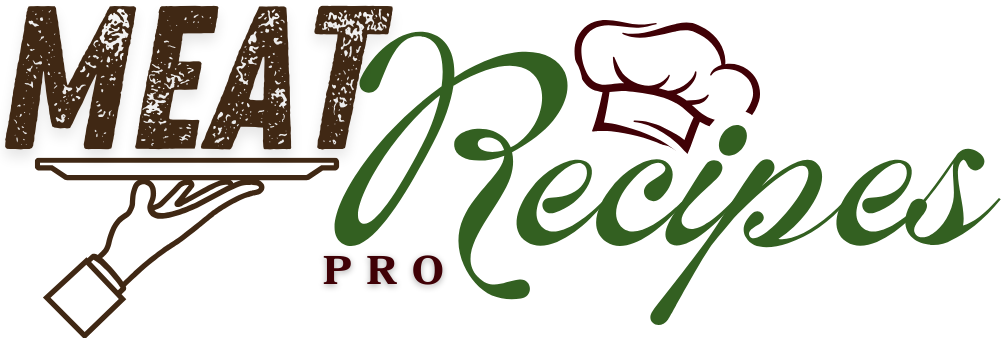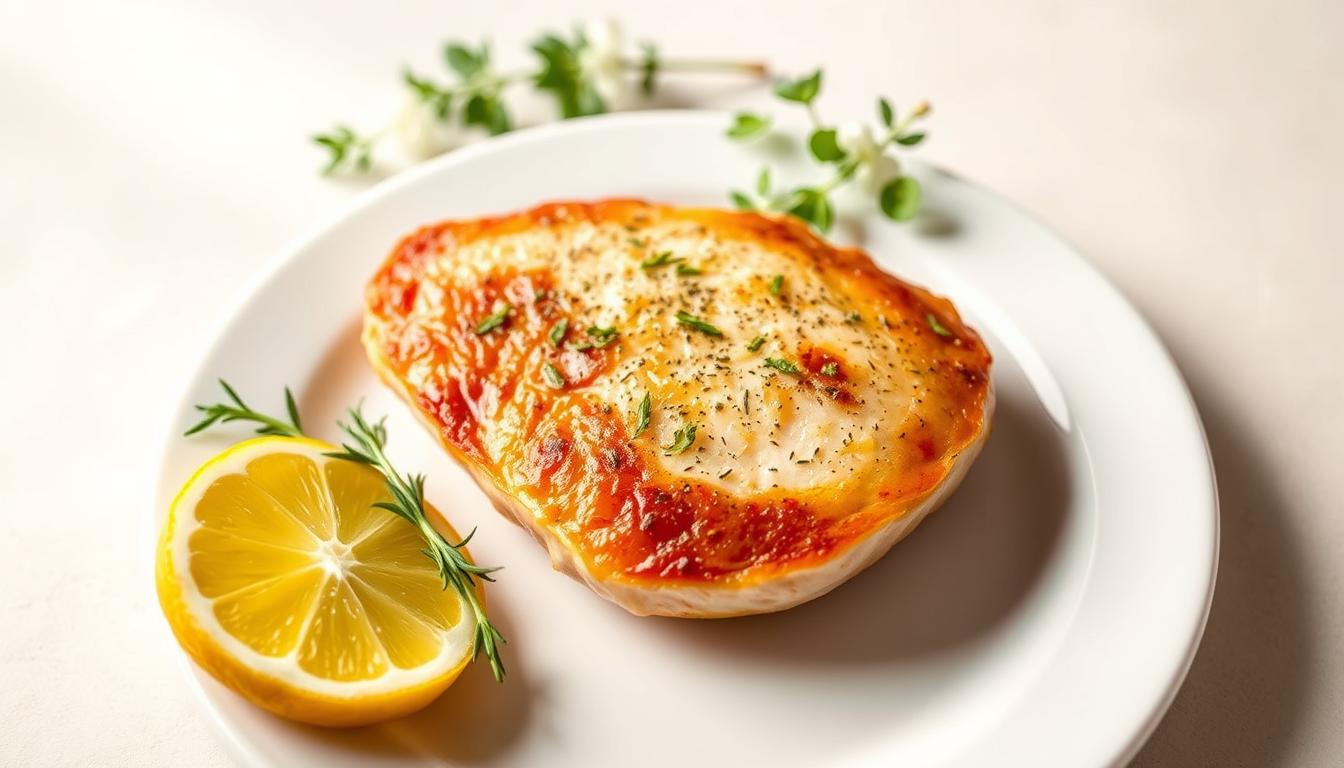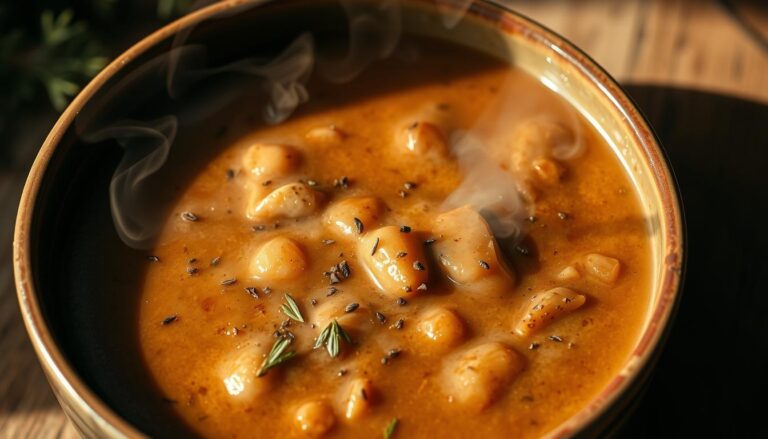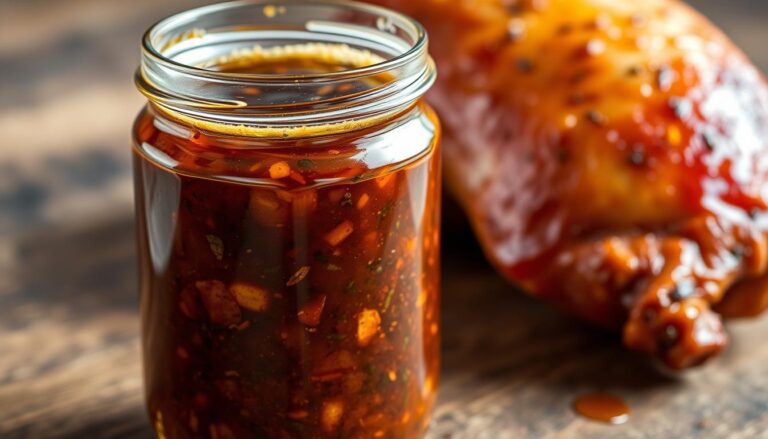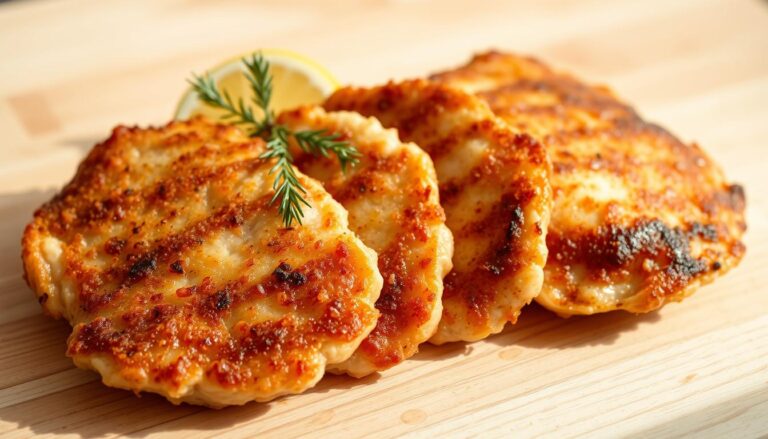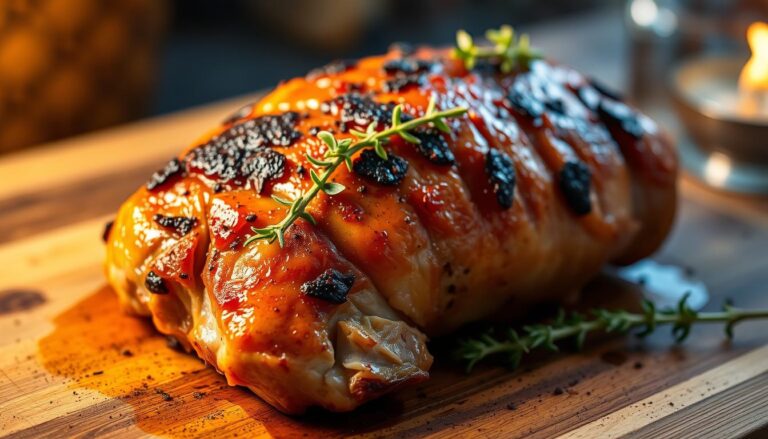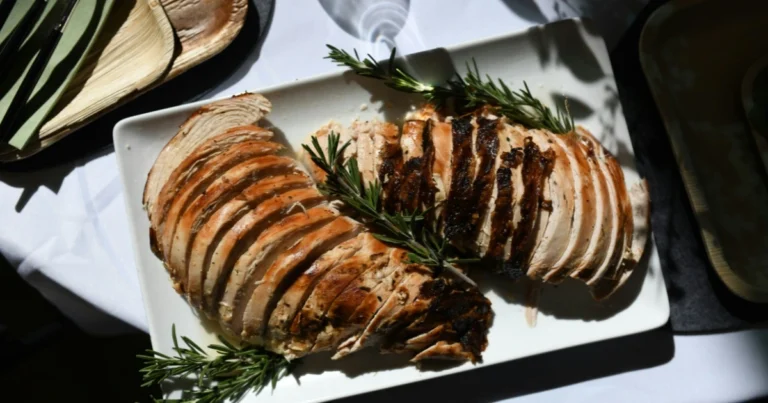Easy Turkey Breast Cutlet Recipe for Dinner
You know that late-afternoon rush when everyone asks, “What’s for dinner?” You want something fast, reliable, and comforting. This simple plan gets a full meal on the table in about 25 minutes from start to finish.
Prep takes 10 minutes and cook time is 15 minutes. Using thin cutlets lets you sear to a golden crust and keep the inside juicy in just a few minutes on a hot skillet.
You can pick a sour cream–Parmesan crumb or the classic flour, egg-and-breadcrumb method. Both are pantry-friendly and speed-friendly, so you can choose based on what you have.
This approach scales easily for one or four, cleans up fast, and gives you leftovers that turn into sandwiches or bowls the next day. Reliable, simple, and delicious—it’s the kind of go-to you’ll use on busy weeknights.
Table of Contents
Why You’ll Love This Turkey Breast Cutlet Recipe Tonight
Fast, flexible, and forgiving—that’s the short version. You get a full meal on the table in about 25 minutes because prep is minimal and stovetop cooking is quick.
You’ll spend roughly 5–10 minutes setting up a simple dredging station or a sour cream-crumb mix. Then pan-fry each piece for about 3–7 minutes per side depending on thickness and coating. This keeps the exterior crisp and the inside juicy while using modest oil and pantry staples.
What makes it work for weeknights
- You save time—quick prep and fast stovetop cooking mean dinner shows up fast.
- Lean, budget-friendly protein cooks evenly, so you avoid long oven sessions and high costs.
- Pick the coating you like use and have on hand: classic flour-egg-breadcrumb or tangy sour cream crumbs.
- Serve with a quick side—salad, roasted veggies, or buttered noodles—to finish the plate in minutes.
Quick Facts: Prep, Cook Minutes, Yield, and Tools
Quick reference: the minutes, servings, and gear that make this pan-fried dinner fast and reliable.
Time
Prep: 10 minutes. Cook: 15 minutes. Total time comes to about 25 minutes.
Servings and yield
This portion makes 4 servings. It lines up with a standard 1-pound package so you can plan sides to match the same minutes.
Essential tools
Set out a large skillet, tongs, and an instant-read thermometer before you start.
- Aim for cutlets roughly 1/4 inch thick so they cook evenly and fast.
- Use a thin layer of oil over medium heat to support browning without excess grease.
- Prep shallow dishes for dredging and a paper towel–lined plate for resting finished pieces.
- Confirm stove reaches steady medium so each batch gets consistent color and temperature.
Ingredients You’ll Need (Breaded and Pan-Fried)
Gathering a few pantry staples makes this pan-fried dish faster than you think. Below are the core items and two simple breading choices so you can pick what fits your pantry and time.
Core staples
Turkey breast cutlets about 1/4 inch thick are best for quick, even cooking.
Have olive oil on hand to film the pan, plus a light spray option if you prefer cooking spray to cut fat. Season simply with salt and pepper.
Breading options
Option 1 gives tang and crunch: mix 1 cup Italian seasoned dry bread crumbs, 1/4 cup grated parmesan cheese, 1/2 cup fat-free sour cream, and 1 tablespoon extra-virgin olive oil. Spread sour cream on each piece and press into that mixture.
Option 2 is classic three-step: flour seasoned with salt, black pepper, and poultry seasoning; 1 egg beaten with 1/4 cup milk; plain bread crumbs. Fry in oil that coats the pan about 1/4 inch deep until golden.
Flavor boosts and setup
Add a touch of garlic (fresh or granulated) to the crumbs for aroma. Arrange shallow dishes for dredging and keep the components separate to avoid clumps.
- Use breast cutlets as a flexible canvas — try lemon zest, smoked paprika, or herbs if you want more flavor.
- Keep an instant-read thermometer and tongs nearby so you can finish the dish confidently.
How to Cook Turkey Cutlets on the Stovetop
Make a quick, reliable stovetop method that gives a crisp, golden crust. Start by setting a three-dish station: seasoned flour (salt, pepper, poultry seasoning), an egg mixed with milk, and plain bread crumbs.
Set up your dredging station for a crisp coating
Alternatively, spread a thin layer of sour cream on each piece and press both sides into a Parmesan-crumb mixture for a richer crust. This mixture holds well and browns beautifully.
Skillet medium heat: add oil and cook in a single layer
Preheat a large skillet over skillet medium heat. Add a thin film of olive oil so the coating fries rather than steams.
Place the pieces in a single layer—add cutlets single to avoid crowding. Keep the surface contact even so each one browns uniformly.
Cook minutes per side: 3-7 minutes until golden and cooked through
Cook minutes per side based on coating: 3–4 minutes side for the flour-egg-crumb method, or 5–7 minutes side for the sour cream-Parmesan approach. Watch for deep golden edges and easy release before flipping.
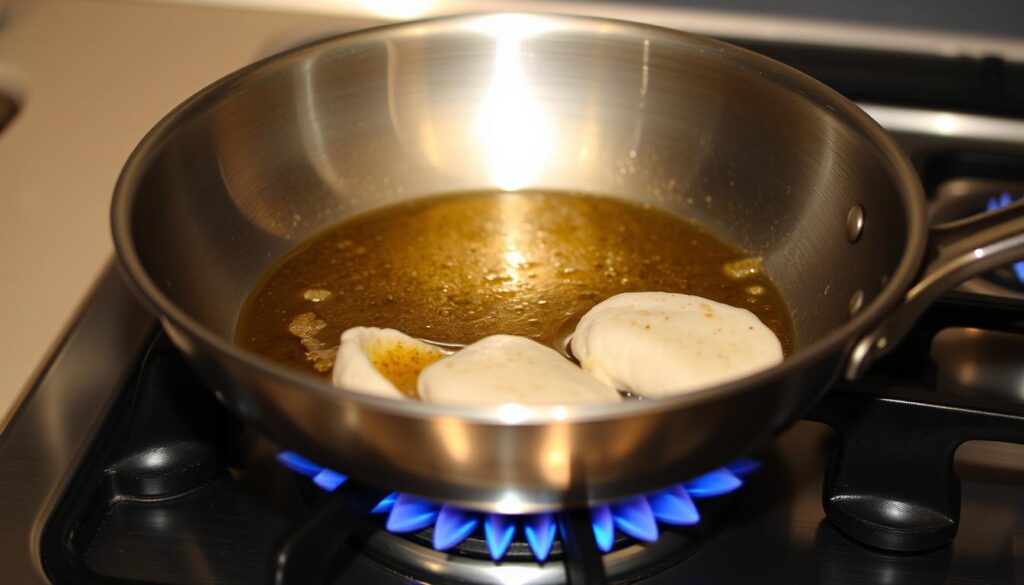
Tip: Use tongs to flip gently and an instant-read thermometer to confirm doneness when you cook turkey cutlets.
Internal Temperature Matters: 165 Degrees for Safe, Juicy Meat
A quick thermometer check at the thickest spot ends guessing and prevents dry results. For safety and texture, you aim for an internal temperature of 165 degrees measured at the thickest part of each piece.
Insert an instant-read thermometer horizontally into the center so the probe does not touch the pan. Thin cutlets heat quickly, so check early to avoid overshooting your target degrees.
How to check and when to remove from heat
- You stop cooking the moment the probe reads 165 degrees to keep the meat juicy and safe.
- Let pieces rest briefly; juices redistribute and carryover heat is minimal in thin cutlets.
- Avoid judging doneness by color: coatings can brown before the interior reaches the right temperature.
- Check multiple pieces if sizes vary so each portion hits the same standard.
“An instant-read thermometer is the easiest way to cook with confidence.”
| Item Checked | Target Reading | Action |
|---|---|---|
| Thickest point | 165°F | Remove from heat and rest 2 minutes |
| Thin pieces | 165°F | Check early to avoid overcooking |
| Multiple sizes | 165°F each | Test each piece individually |
Skillet Technique: Single Layer, Cook Two Batches if Needed
Get the pan hot and plan to work in rounds so each piece browns evenly. Heat about 1/4 inch of oil over medium in a large skillet. You want a steady sizzle when you add the first piece.
Space matters: arrange cutlets single layer so steam escapes and the crust stays crisp. If pieces crowd, the coating will steam and soften instead of turning golden.
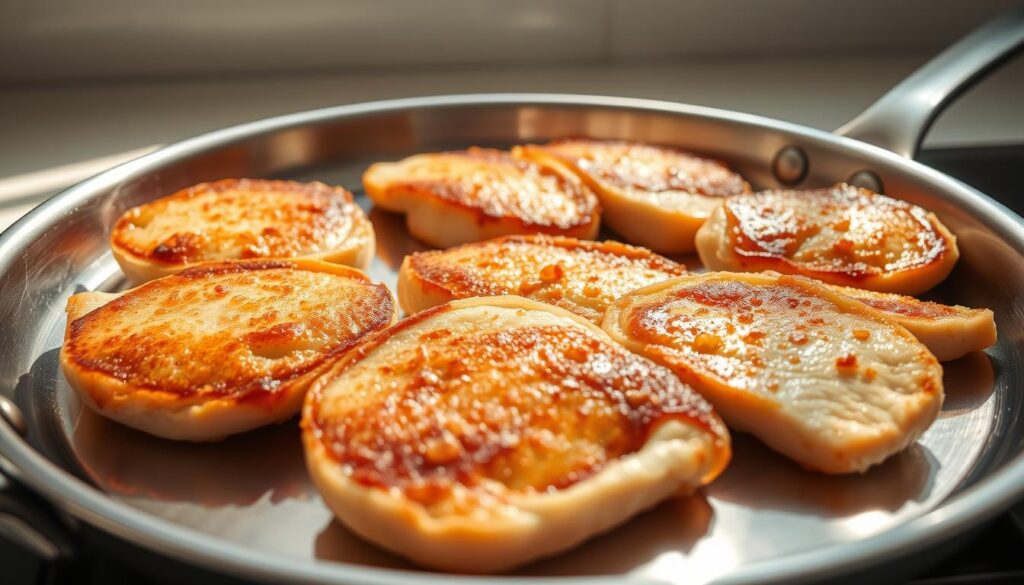
How to manage batches and resting
Cook two batches rather than overfill the pan. Fry about 3–4 minutes per side for a classic coating until edges are deep golden.
- Add cutlets single to the hot fat and listen for a steady sizzle — that sound means the oil is doing its job.
- Return the skillet to temperature between rounds so the second set browns like the first.
- Transfer finished pieces to a paper towel-lined plate to wick away excess oil and preserve crunch.
| Step | What to watch for | Action |
|---|---|---|
| Heating | Steady sizzle when metal meets oil | Begin frying; do not overcrowd pan |
| Cooking | Golden edge and easy release | Flip after 3–4 minutes per side |
| Resting | Excess surface oil | Move to paper towel-lined plate; keep single layer |
“Work in rounds and keep pieces single so the crust stays crisp and the meat stays tender.”
Timing, Texture, and Troubleshooting
When you want consistent results, learn the cues that tell you a piece is done without guessing.
Cues for doneness
Look for a deep golden crust and a firm feel when you press gently. Those visual and tactile signs usually mean the interior is close.
Confirm with a quick temperature check: aim for 165°F at the center. That temperature keeps the meat safe and juicy.
For classic flour-egg-crumb breading expect about 3–4 minutes per side. For the sour cream-Parmesan approach plan 5–7 minutes per side.
Fixing too-fast or too-slow cooking
Keep the burner near skillet medium heat. If the crust darkens too quickly, lower the flame. If it takes too long to brown, nudge the heat up.
Add a touch more oil if the pan looks dry so coatings fry instead of sticking. Cut back on fat if you see pooling or loud sputtering.
- Season the flour with salt and pepper so flavor carries through.
- Don’t flip early—wait until the coating releases easily to protect the crust.
- Work in smaller batches if steam builds and stops cutlets cook properly.
- Rest pieces briefly after cook minutes so surface moisture evens out and crispness holds.
“Consistent heat and a thin, even layer of fat are the twin keys to crisp, even results.”
| Issue | What to try | Target |
|---|---|---|
| Browning too fast | Lower heat, add small splash of oil | Golden, not burned |
| Not browning | Raise to medium, wait for steady sizzle | Even crust in minutes |
| Crust tearing | Use more oil and wait for natural release | Intact crust, juicy center |
Serve It Up: Easy Sides, Sauce Ideas, and Leftovers
Finish the plate quickly with a few easy sides and a bright pan sauce that takes minutes to make.
Weeknight sides that work
Round out the plate with simple choices that complement the crust. A green salad adds contrast.
Roasted broccoli or carrots bring warmth and color. Buttered noodles or mashed potatoes add comfort.
Quick pan sauce
After you remove the cutlets, sauté minced garlic in the pan drippings for 30 seconds.
Deglaze with about 1/2 cup to 3/4 cup chicken broth and reduce until glossy.
Swirl in a teaspoon of olive oil or a pat of butter, spoon the sauce over each piece, and top with parsley or lemon zest.
Storing and reheating
Layer pieces with parchment in an airtight container and refrigerate promptly.
Reheat on a baking sheet in a 350°F oven for a few minutes to re-crisp the coating. Or repurpose into sandwiches and salads for an easy next-day meal.
“A quick pan reduction lifts weeknight dinners and keeps leftovers interesting.”
| Side | Why it works | Time |
|---|---|---|
| Green salad | Fresh contrast to fried crust | 5 minutes |
| Roasted vegetables | Warm, caramelized flavor | 20–25 minutes |
| Buttered noodles | Comforting base that soaks sauce | 10 minutes |
| Pan sauce (chicken broth) | Quick, flavorful finish | 3–5 minutes |
Conclusion
With basic pantry staples and steady heat, you’ll have a golden, juicy plate in minutes.
Keep it simple: sear thin breast cutlets in a hot skillet with a light film of olive oil, work in a single layer, and cook in batches if needed.
Choose the classic flour-egg-crumb or the tangy Parmesan mixture to protect the meat and add crunch. Aim for the few cook minutes per side—3–4 or 5–7 minutes side depending on coating—and confirm doneness at 165 degrees.
Season with salt and pepper, rest briefly, then finish with a drizzle of oil or a sprinkle of parmesan cheese. You’re ready to cook turkey cutlets confidently for quick, tasty weeknight meals.
